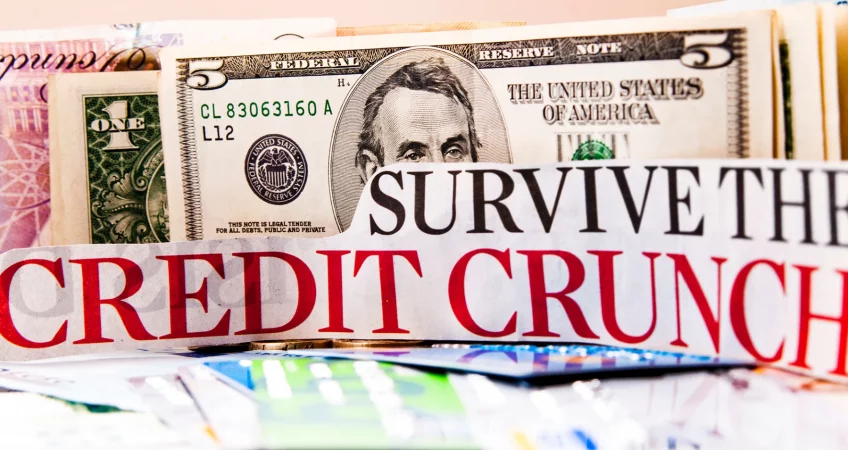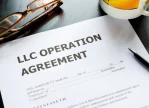Credit Crunch: A Comprehensive Guide

Credit Crunch: A Comprehensive Guide
Looking to get ahead of the Credit Crunch? Look no further than this comprehensive guide, chock-full of helpful tips and information. Learn everything you need to know about this important topic – from what it is, to how to protect yourself – with ease!
- A term used to describe the current economic situation in which there is a shortage of credit
- The credit crunch had huge worldwide repercussions, including the approximately 20% decline in housing values in both the US and the UK.
- Bank of England lowered interest rates from 5.5% in 2007 to 2% in December 2008. For almost ten years, they kept it at 0.5%. The base rate increased to 0.75% in 2018, but due to the coronavirus epidemic, it fell to 0.25% in 2020 and then to 0.1% again in 2021.
In 2008, the world experienced a financial crisis that became popularly known as the credit crunch. This event significantly impacted the global economy and led to changes in the banking and credit industries.
If you’re unfamiliar with the credit crunch or want to learn more about it, you’ve come to the right place. This article will provide a comprehensive guide to the credit crunch. We’ll explain what it is, discuss its causes and effects, and outline some steps that have been taken to prevent similar crises from happening in the future.
What is credit crunch?
A credit crunch is a term used to describe the current economic situation in which there is a shortage of credit. This has caused businesses and individuals to experience difficulty obtaining loans, especially for large purchases such as homes or cars.
The definition of the credit crunch can be difficult to understand because it refers not just to banks or lenders but also includes people who buy or sell securities such as stocks or bonds. In short, this financial crisis could affect anyone who has something impactful (or potentially impactful) with lending money.
Causes of the credit crunch
There are several causes of the credit crunch, including:
- The global recession has led to an increase in unemployment and decreased consumer spending, both of which have negatively impacted the demand for loans.
- Increased regulation of banks and lending institutions – stricter regulations have made it more difficult for them to lend money, especially to risky borrowers.
- High-interest rates—since lenders are reluctant to offer high-interest loans due to the increased risk involved, this has increased borrowing costs.
- Decreased availability of affordable mortgages – Many people who would normally be able to borrow money now find that they cannot because their income isn’t high enough or their credit score isn’t good enough.
- An incorrect estimation of the creditworthiness of debtors.
- A change in monetary conditions, such as an increase in reserve requirements or new regulatory restrictions on lending imposed by a central bank.
- An imposition of credit controls by the government on the banking industry.
What caused the credit crunch in 2008?
Cheap credit and loose lending rules, which created a housing bubble, were the root causes of the financial crisis of 2008. The credit crunch of 2008 resulted from several factors, but the most significant one was the global financial crisis. This crisis began in 2007 when banks started to fail, and investors lost confidence in them. The problem got worse as more and more banks failed, leading to a decrease in lending and an increase in interest rates.
These events caused businesses to stop borrowing money, leading to layoffs and decreased sales. In addition, people who had borrowed money started defaulting on their loans, creating even more economic problems.
How does the credit crunch differ from a recession?
Credit crunches are different from recessions, although both negatively affect the economy. Recessions are when the economy declines for two consecutive quarters and decreases spending, which is the difference between a credit crunch and one.
When businesses can’t get the extra money for planned investments, they cut everything, including their employment budget. A credit crunch can eventually lead to a recession. A long time of uncertainty leads to a decline in productivity and unemployment. A recession gets going if it keeps up for a long time.
Credit crunch Effects
The following are some of the effects of the credit crunch:
- Due to stricter lending criteria imposed during the crisis, businesses have been struggling to obtain loans from banks.
- Consumers have been reluctant to borrow money as they fear that their finances will not be able to handle any unexpected expenses.
- Banks have been reducing their lending activities, which has reduced business investment and job losses.
- The banking sector has also experienced significant financial difficulties due to these problems.
- There are fewer job opportunities as companies reduce their staffing levels or move away from certain industries with a higher risk of layoffs.
UK’s financial crisis
The UK’s financial crisis had far-reaching effects on the economy. It led to reductions in consumer spending, business closures, and unemployment rates above average for Europe then. In addition, it increased government borrowing costs and decreased tax revenues.
As a result of the slowdown in lending, values in the markets fell, forcing people who had taken out excessive loans to bet on growing prices to sell their assets to pay back their debts. The boom burst, and home values fell. Banks panicked as a result and reduced lending even more.
Next financial crisis:
According to a thorough new study by the World Bank, as central banks around the world simultaneously raise interest rates as a result of inflation, the world may be making strides toward a global recession in 2023 and a string of financial crises in developing markets and developing economies that would harm them permanently.
A sensible economist at the Bank of England responded that financial crises are as difficult to anticipate as earthquakes and flu pandemics when Queen Elisabeth II questioned, “Why did nobody notice it?” about the impending financial crisis of 2008. They occur.
Key Takeaway:
The credit crunch continues to hurt businesses of all sizes, and you must be prepared for what comes next. In this blog post, we’d outline some key things you need to know if the credit crunch impacts you. You can start taking steps to adjust and prepare your business for increased competition.
It’s no secret that the current credit crunch is having a major impact on businesses worldwide. Thanks for reading our blog post on the credit crunch. We hope you found it informative and helpful. If you did, please share it on social media and tell your friends about it. And if you want to stay up-to-date on all things finance, subscribe to our Prillionaires app premium membership. Plus, come back soon for more great content from the Prillionaires team.










